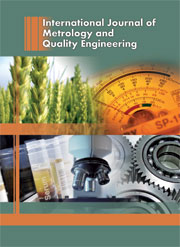No CrossRef data available.
Article contents
Uncertainty inherent in empirical fitting of distributions toexperimental data
Published online by Cambridge University Press: 06 March 2014
Abstract
Treatment of experimental data often entails fitting frequency functions, in order todraw inferences on the population underlying the sample at hand, and/or identify plausiblemechanistic models. Several families of functions are currently resorted to, providing abroad range of forms; an overview is given in the light of historical developments, andsome issues in identification and fitting procedure are considered. But for the case offairly large, well behaved data sets, empirical identification of underlying distributionamong a number of plausible candidates may turn out to be somehow arbitrary, entailing asubstantial uncertainty component. A pragmatic approach to estimation of an approximateconfidence region is proposed, based upon identification of a representative subset ofdistributions marginally compatible at a given level with the data at hand. Acomprehensive confidence region is defined by the envelope of the subset of distributionsconsidered, and indications are given to allow first order estimation of uncertaintycomponent inherent in empirical distribution fitting.
- Type
- Research Article
- Information
- International Journal of Metrology and Quality Engineering , Volume 4 , Issue 3 , 2013 , pp. 185 - 191
- Copyright
- © EDP Sciences 2014


